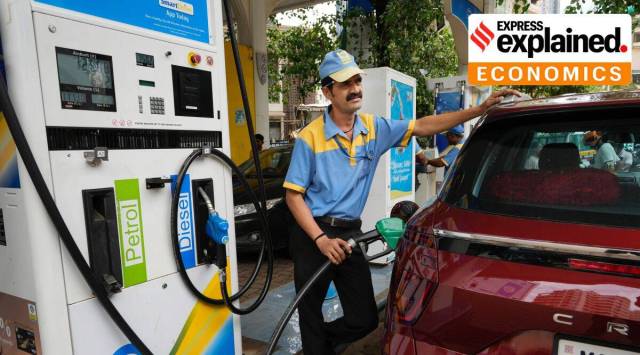The government has slashed windfall gains tax on exports of diesel and aviation turbine fuel (ATF), while marginally increasing the levy on domestic crude oil in its 16th fortnightly revision of the duties, as per notifications issued by the Finance Ministry.
The levy, first imposed on July 1, 2022, has been reduced by Rs 2 per litre on diesel exports to 50 paise per litre, while on ATF exports, it has been cut to nil from Rs 1.50. This is the lowest the levy has ever been on fuel exports. On domestic crude oil, the hike is marginal—Rs 50 per tonne—taking the duty to Rs 4,400 per tonne.

The revised rates are effective March 4.
What is windfall gains tax and why was it imposed?
It is a term used to describe cesses under the ambit of central excise imposed on fuel exports and domestic crude oil production to tax super-normal profits of fuel exporters and oil producers. In the case of domestic crude oil and ATF exports, the windfall gains tax is in the form of Special Additional Excise Duty (SAED), while on diesel, it is a combination of SAED and Additional Excise Duty (AED). The duties are revised once every fortnight based on the movement in margins on fuels in the international market and global crude oil prices.
Story continues below this ad
These levies were first imposed on July 1, 2022 due to the surge in global oil and fuel prices in the aftermath of Russia’s invasion of Ukraine. As the price of crude oil produced in India is benchmarked to international prices, domestic oil prices also went through the roof. At the same time, margins on fuels were a lot more lucrative in other markets, incentivising refiners, particularly private sector players, to export fuels. This had resulted in fuel supply disruptions in some parts of the country.
Apart from taking a share of windfall profits of oil producers and fuel exporters to partly soften the blow of duty cuts on domestic petrol and diesel sales, the government also wanted to ensure enough fuel supply to meet domestic demand through these taxes.
Initially, SAED and AED were imposed on petrol exports as well, but the duties were reduced to nil in the first rate revision effective July 20, 2022.
Apart from India, several other countries have imposed windfall gains taxes to tax super-normal profits of energy companies.
Story continues below this ad
Tax on ATF exports nil, does this mean Govt has scrapped windfall gains tax on ATF?
Technically, reducing the duty to zero does not mean the levy has been scrapped or abolished. The provision for SAED on ATF exports still remains and if ATF margins in the international market improve substantially, the government could hike the SAED on ATF exports.
In fact, even prior to the latest revision in windfall gains tax, the levy on ATF exports was reduced to nil on two occasions—August 3 and October 2, 2022. But in subsequent revisions, the duty was increased.
Even in the case of petrol, the duties were not abolished but reduced to nil. This means that the enabling provision is still there for the government to tax petrol exports, if it wants to.
Story continues below this ad
How do current rates of windfall gains tax compare with initial levels?
When it was first introduced, SAED on domestic crude oil was Rs 23,250 per tonne, which was roughly $40 per barrel. The latest rate is 81 per cent lower.
In the case of diesel exports, SAED and AED together are now 96.2 per cent lower than the July 1, 2022 level of Rs 13 per litre.
Exports of ATF and petrol initially attracted a levy of 6 rupees per litre each.








































